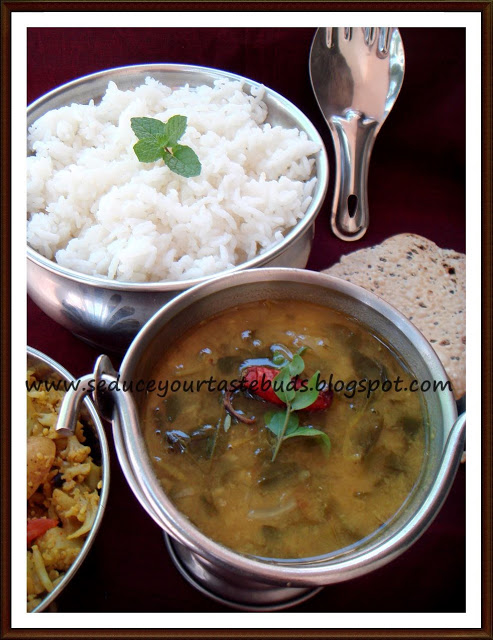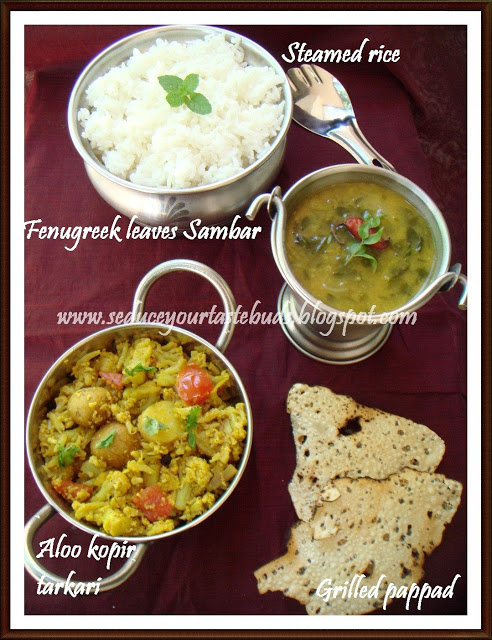For the second day under ‘Dishes for the elderly / sick’, I chose to write about Anemia. Anemai is not a sickness but the symptoms associated with it makes a person dull and mimics sickness.
Anemia is a condition where there is a decreased number of red blood cells in the body.Hemoglobin which is a main component of the Red blood cells or RBC carry oxygen to the various parts of the body and hence if you are anemic, the blood does not carry enough oxygen tot he rest of the body. The main symptom of anemia is fatigue.
Other symptoms include
- Loss of energy
- Shortness of breath
- Headaches and dizziness
- Paleness of skin
- Leg cramps
- Shortness of breath and breathlessness on exertion
Women and children and those with chronic illness are the major groups to be affected by anemia.
There are many types of Anemia and most of them are treatable by proper diet and Iron supplements.
There are two types of Iron from the food that can be made available to the body
- Heme Iron – It is found in foods that contain hemoglobin i.e animal products such as meats,fish , poultry etc
- Non heme iron – This is found in non heme containing products like those obtained from plants or other fortified food stuffs
The main difference between heme and non heme iron is that heme iron is best absorbed by the body and the percentage of absorption is also more. And also no other factors inhibit / affect the absorption of non heme iron from the foods into our system.
Some of the factors that inhibit the Iron absorption in the body are
- Phytic acid present in grains , legumes and other plant products
- Coffee / cocoa
- Certain herbs like peppermint
- Egg protein
- Certain minerals like Calcium, Zinc, Copper , Magnisium etc
- Vitamin C
- Citric Acid
- Fruit juices
- Yellow colored fruits and veggies like mango, papaya
- Beef
- Poultry
- Pork
- Salmon
- Spinach, fenugreek leaves, curry leaves, kale and other green leafy vegetables
- Dried fruits and nuts
- Beaten rice / pressed rice / poha
- Jaggery , molasses
- Artichokes
- Iron fortified cereal grains and their products
- Brussels sprouts
- Pumpkin seeds, sun flower seeds
- Lentils and beans
- Broccoli
- Strawberry , etc
- Remove the fenugreek leaves from the stalk and wash well and keep aside.
- Heat oil in a pressure cooker.
- Put in mustard seeds, cumin, urad dhal, curry leaves, broken red chillies.
- When the mustard splutters and the dal turns brown, add the pearl onions and saute till the onions turn translucent.
- Add the fenugreek leaves and saute for a couple of minutes till till shriks a bit and add 2 cups of water.
- When it comes to a rolling boil, add the sambar powder, salt and washed dhal.
- Mix well and pressure cook for 8- 10 minutes or till the dhal is completely cooked
- When the pressure releases, mix well and serve hot with steamed rice.
- If the sambar is very thin / watery , let it simmer till it thickens.
- Increase or decrease the quantity of fenugreek leaves and dhal to suit your taste.




Very good post..and so well explained. I always enjoy reading your informative posts .combo looks great.
Healthy and delicious recipe
Very informative post PJ. I think iron deficiency is an issue in many women as well, so this information is very useful to all of us.
Methi sambar sounds delicious and healthy.
One never realizes such goodness lies in such a simple dish right, thanks for sharing all that info, will surely help a lot.
Fenugreek in sambhar sounds delicious !
My mom used to prepare the same…. Feel like eating now
Loved this sambhar…i know it has lot of healthy rich contents into it…
drooling !!!!
A very useful post, PJ. Thanks for sharing!
very informative post